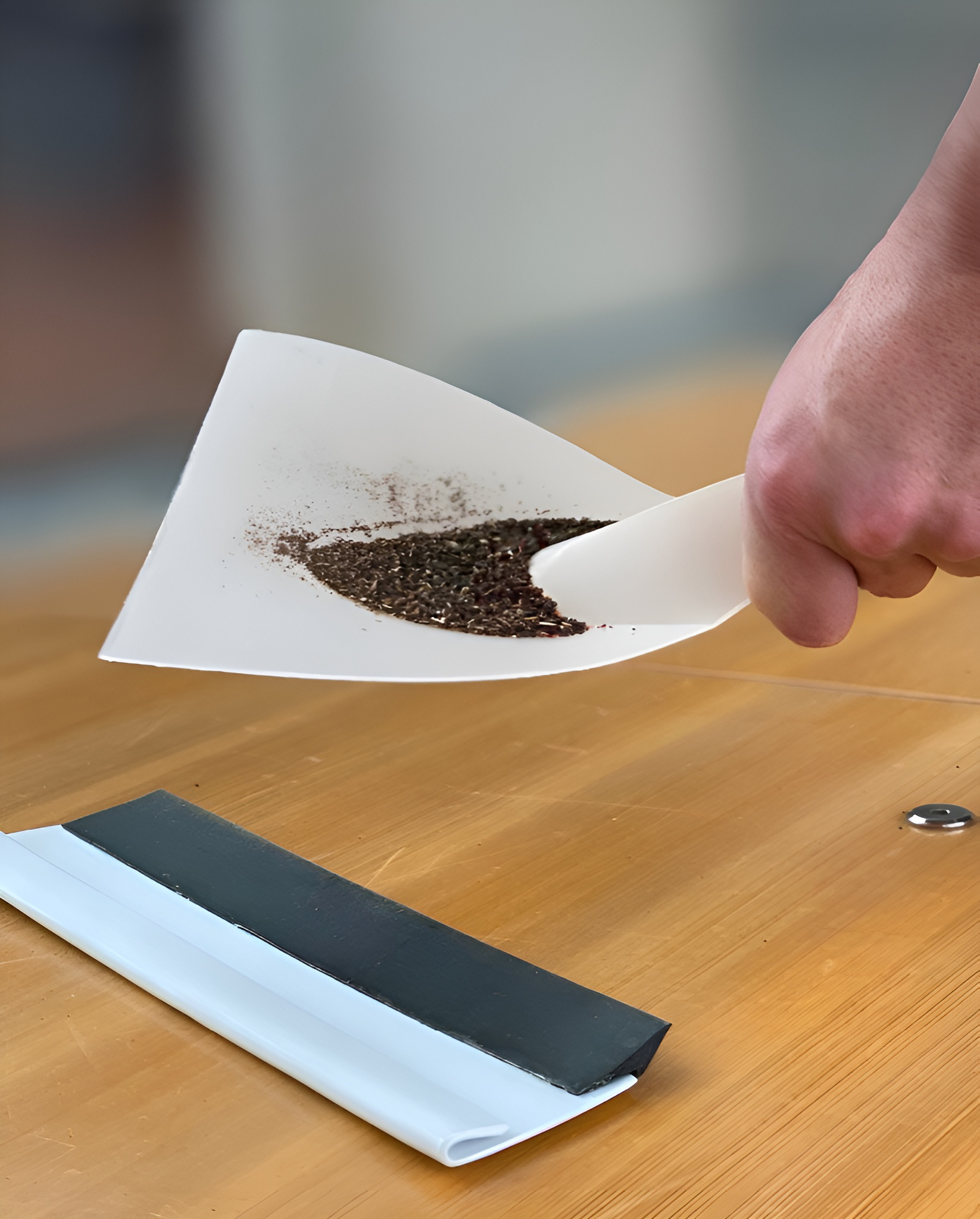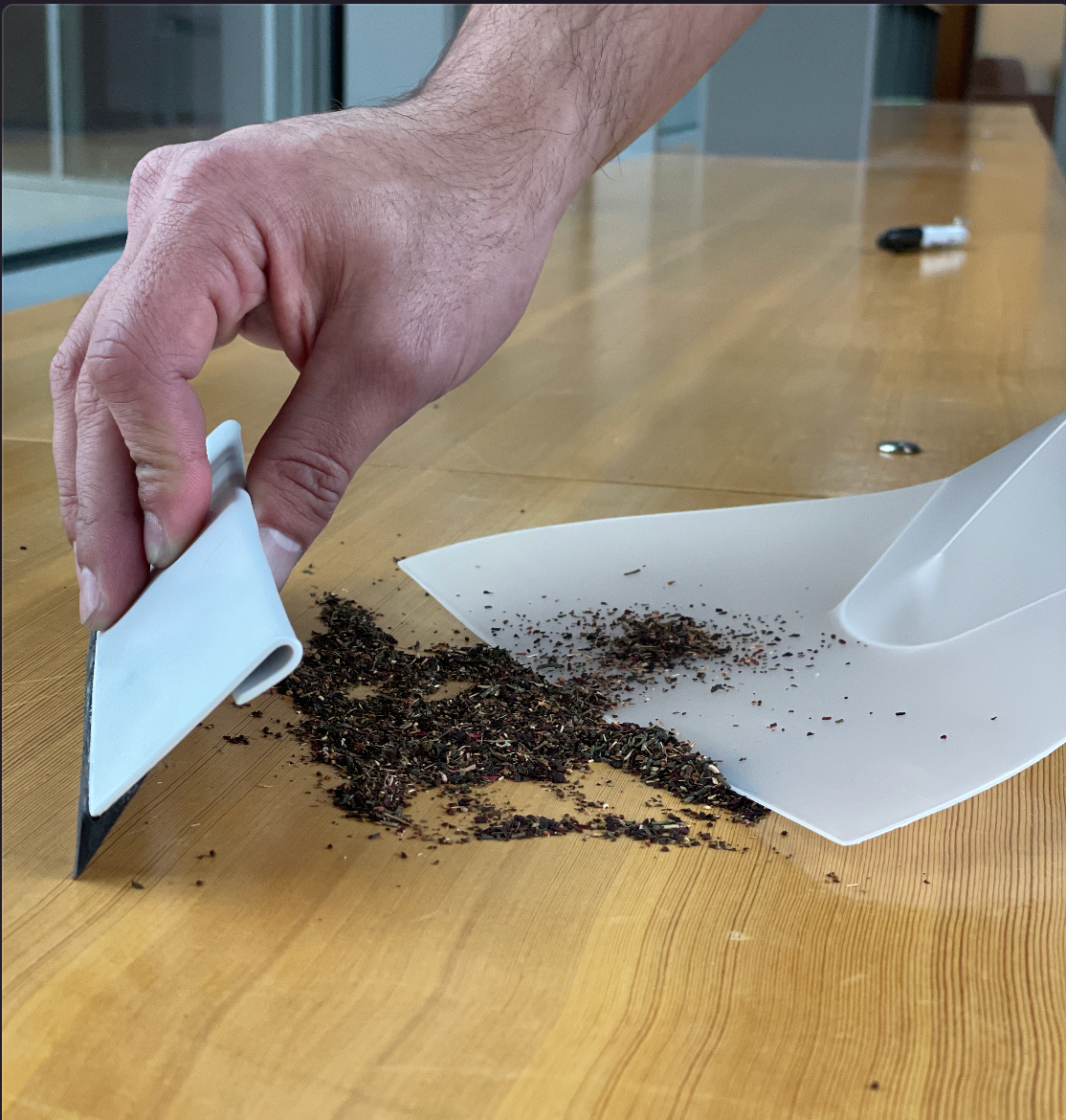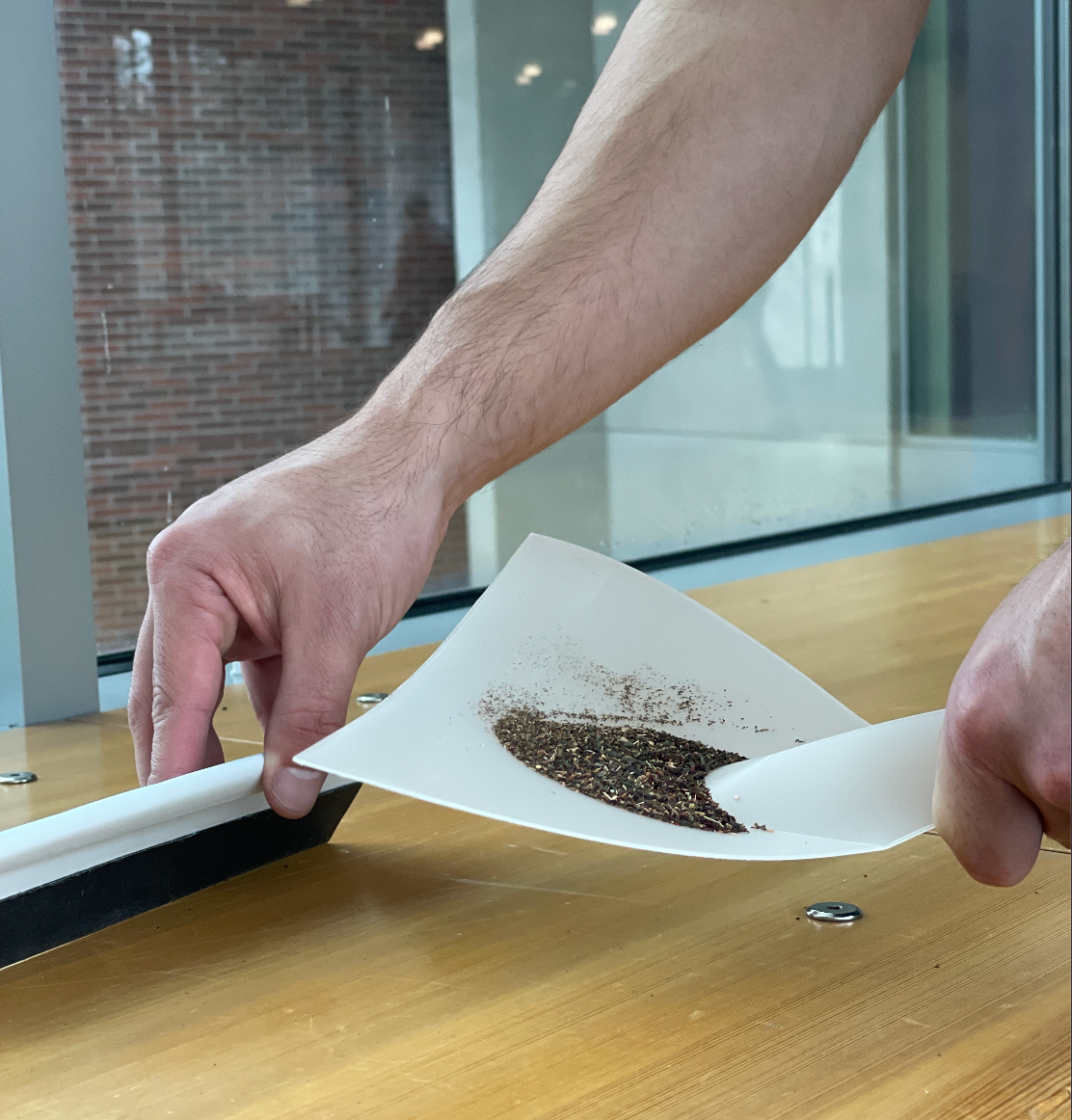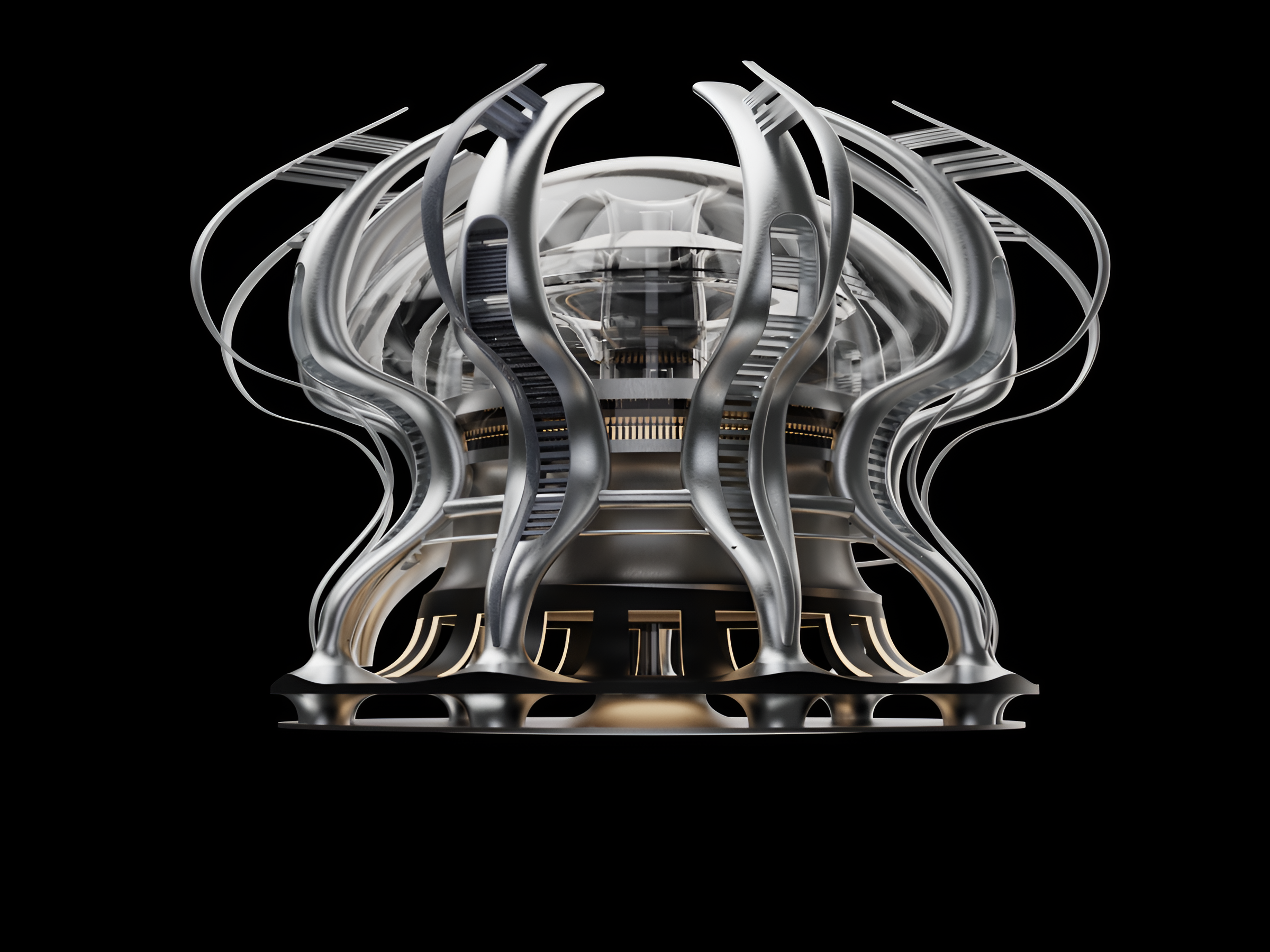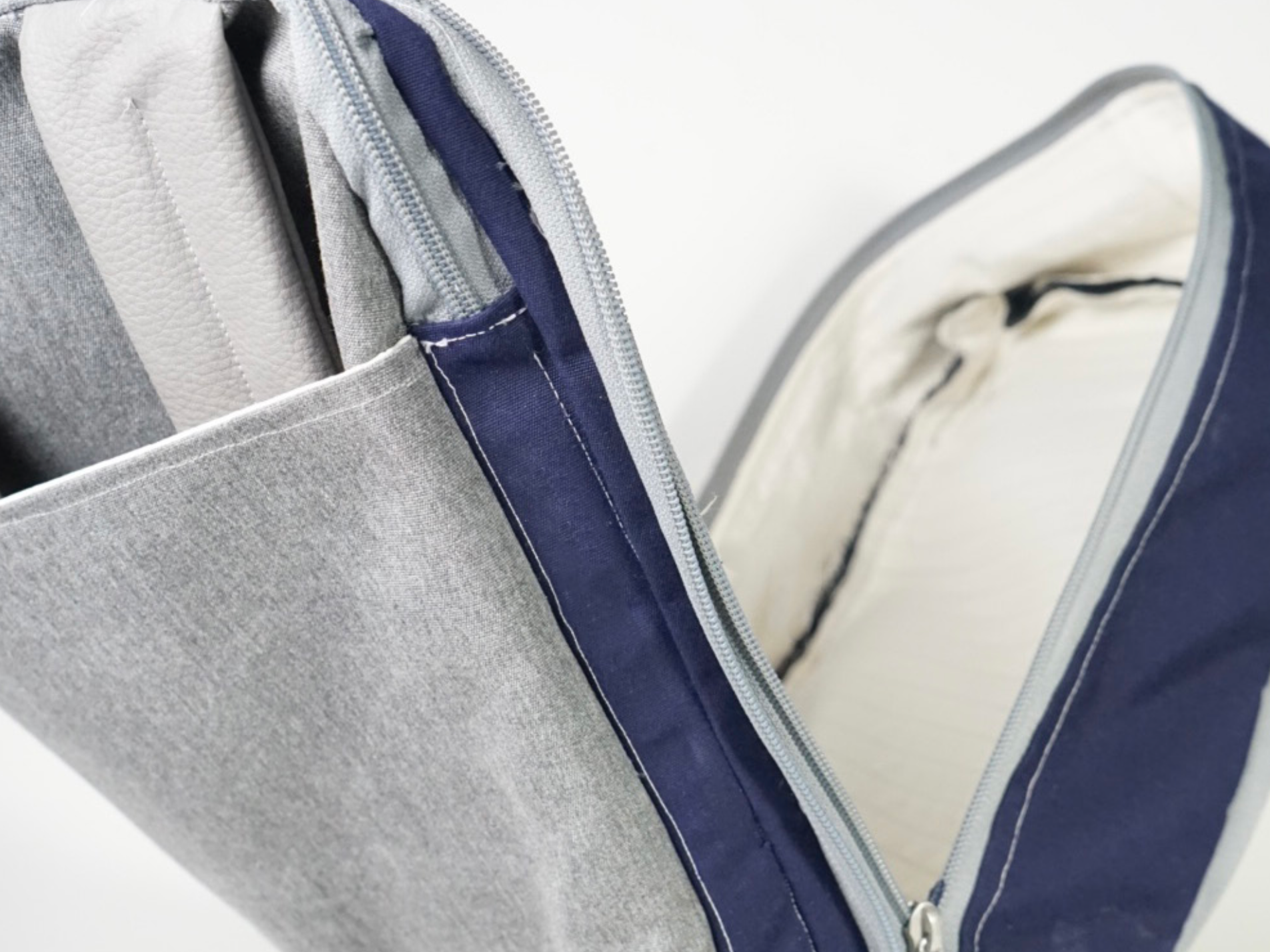How may we turn the convenience and function of a makeshift paper dustpan into a comfortable, affordable, well-designed dustpan-brush set?
Observation of functional minimalism, elegant curves, and easy-to-manipulate forms
Brief exploration of form through sketching, keeping the iterations as fast as possible
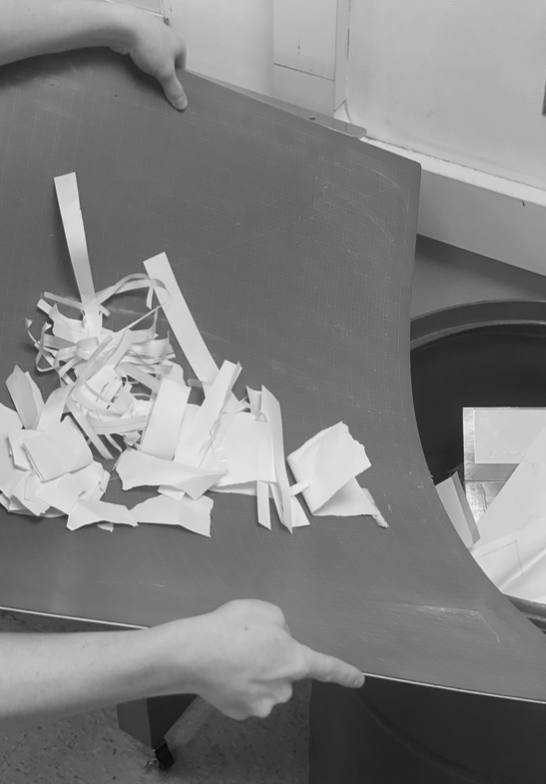
The starting point
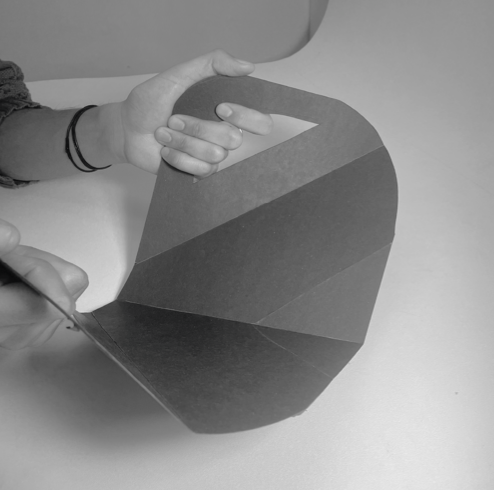
Two-handed concept to simulate cutting board

Experimentation with folds
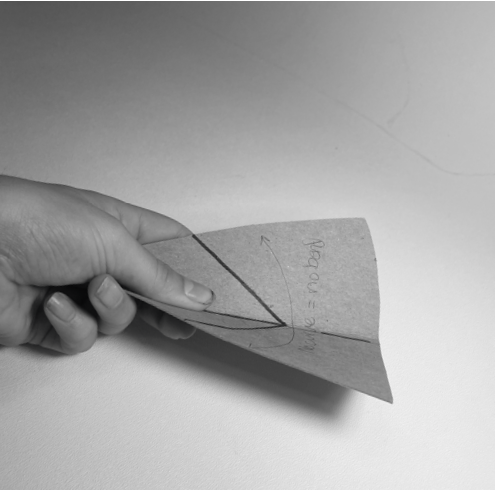
Smaller hold for better control
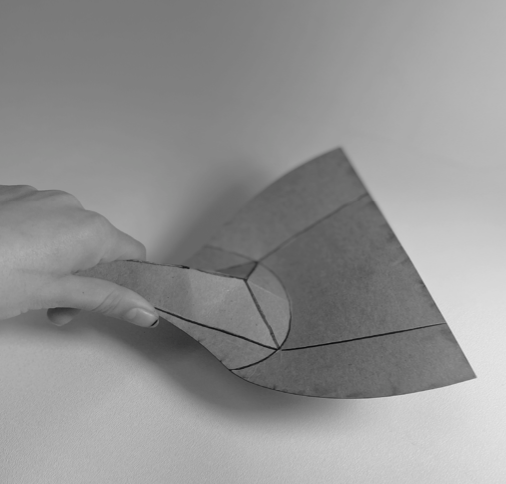
More complex compliance mechanism

Complex does not always mean better

Simplified design to create elegance in the form
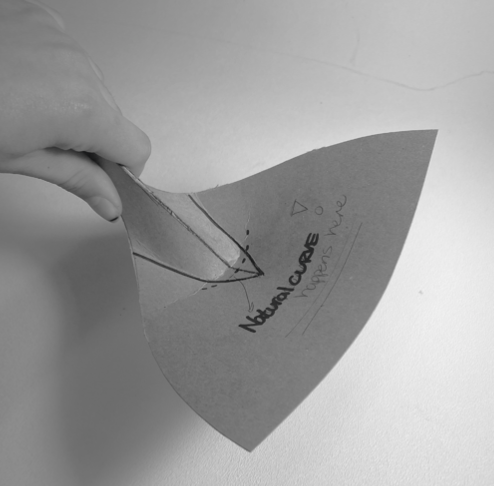
Discovery that the best fold happens at a curve, not a point
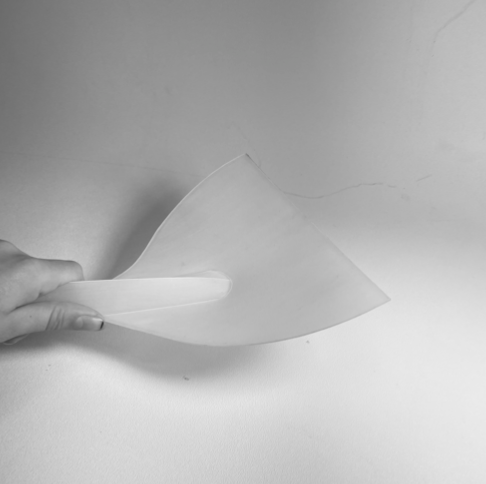
Refining the design in plastic
The material choice, thin polypropylene plastic, allows the dustpan to create a "living hinge," meaning that it can bend a near-infinite amount of times without breaking apart.
To create a living hinge, the plastic needs to be heated. To achieve this, I used a low setting on a laser cutter to melt (but not cut) a crease.
The geometry that allows the sides of the dustpan to fold up into a cradle is created by two living hinge creases that fold opposite to each other, creating tension in the dustpan when the handle is squeezed.
Final product
Living design, flexible solution
